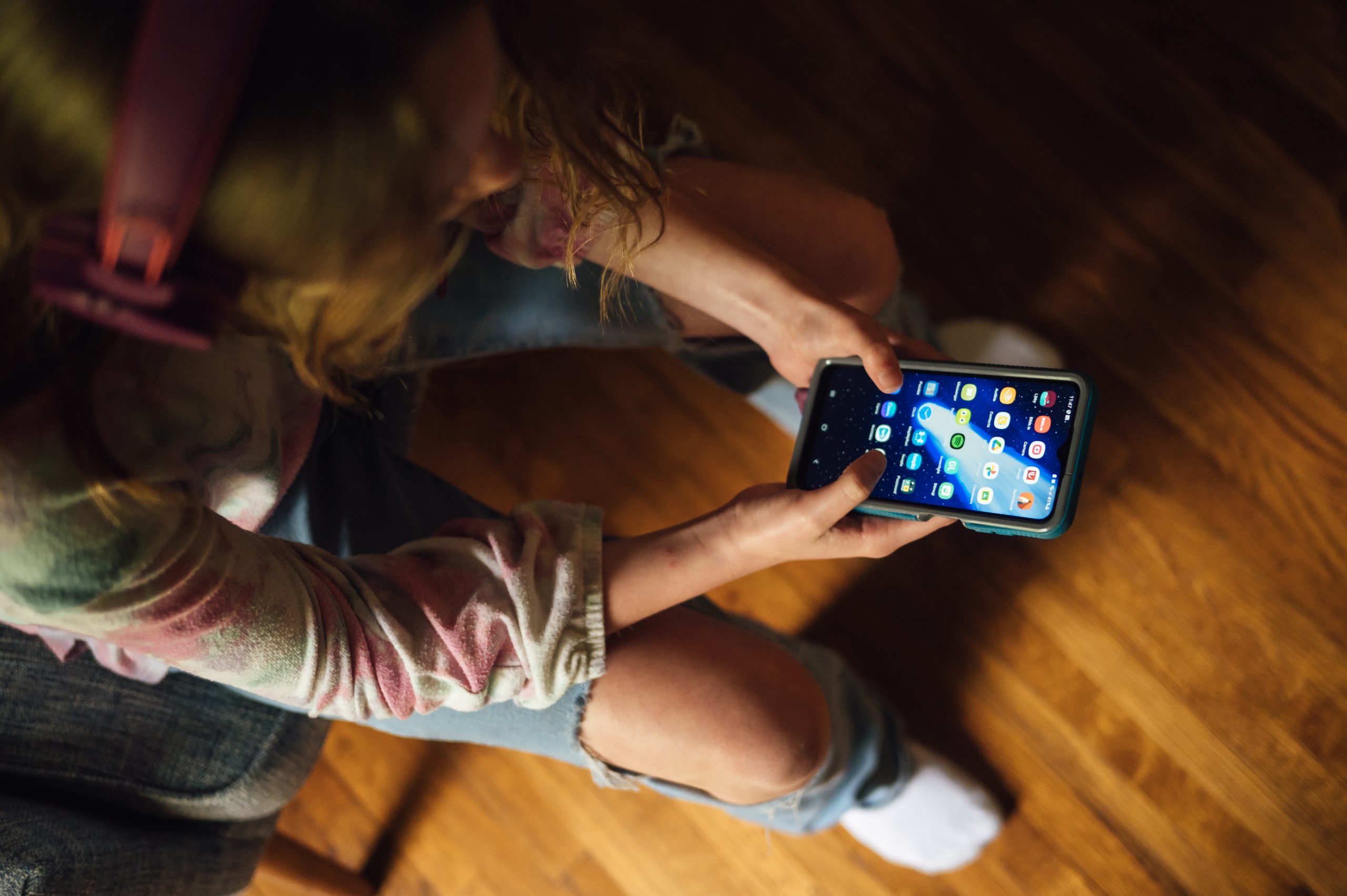
If you have kids in the 9-14 age range, this is very likely to be on your mind:
Should I get my kid a smartphone? He really wants one.
I want to be able to contact my daughter about a change in the soccer pickup location.
I don’t want her glued to yet another screen.
I want him to be able to call me in an emergency.
Ugh, social media. Am I just opening up the gateway?

Knowing this was a hot topic of conversation among my peers, I recently asked an open-ended question on my personal Facebook page about families and their views, experiences, and advice surrounding smartphones. The responses had a lot in common.
Delaying a smartphone is an uphill battle.
Kids want to be able to contact their friends outside of school hours. For those of us who grew up in the 80s and 90s, we had home phones to use, and our friends’ numbers memorized. Our kids don’t have that. Parents like the ability to get in contact with their kids wherever they are, especially as the number of extracurriculars increase. In my house, the “I want my own phone” campaign started around age nine and hasn’t stopped. Many parents reported wanting to hold off and wait, but for a variety of reasons, ended up deciding to provide some type of phone before they had planned to do so. Spoiler alert: This was our family, too.
Even so, many families are on board with the Wait Until 8th plan.
This is a nationwide program to empower parents to delay giving a child their own smartphone until at least 8th grade. For many of these families, their kids do have some access to texting with friends via an at-home tablet or iPad, where they can use Facebook Messenger Kids or iMessage to stay in touch with friends.
There are alternative options to a fully-fledged iPhone or Android.
Many families chose an in-between option, such as Gabb, so their preteens could contact them in emergencies but not have access to the more addictive or problematic sides of phones. In our family, we got our daughter a Pinwheel phone for her 12th birthday. And, for now, it’s working for us, more or less. Our oldest doesn’t have any access to social media or addictive games on her phone but is able to text friends, listen to books and music, take pictures, and check school assignments. There’s a parent portal that allows us to manage her contacts, see everything she does on her phone, and set time limits.
That said, we now have a child who can often be found walking around the house completely oblivious, listening to music on headphones, and who has to be reminded (more than once) to put her phone away at dinner. As much as we appreciate the Pinwheel phone for all of its protections and boundaries, we still seem to have fast-forwarded our daughter into her teenage years.
As far as smartphone alternative options go, we found the list at Wait Until 8th a helpful resource.
Bedtime limits: A lot of families charge devices overnight in a common area, and never in kids’ rooms. That way their kids aren’t tempted to scroll on their devices all night. Many also suggested having a “device bedtime” ahead of the kid’s bedtime so the kids’ brains could have a break from the screen prior to falling asleep. Research suggests that screens can interfere with being able to fall asleep. There are also settings within many devices that turn off apps at a certain time of day.
Social media is another can of worms. Many families with kids in the tween range were especially careful about social media platforms, even for kids with their own smartphones. But many report that kids’ social communication often takes place within apps and limits on social media is yet another smartphone-related area of challenge in their homes.

But almost without exception, every parent that chimed in said something about the following.
The struggle is real.
There’s no one-size-fits-all solution that works for every family and every kid. Parents are doing their best to monitor and protect their kids from inappropriate content and screen addiction. Parents are also trying to help their kids build life skills where someday the kids can manage their own devices, screens, and Internet presence. Every parent wants the best for their kids, and every family has seen things work okay and not okay when it comes to their kids’ access to technology. Because kids within a family are different, parents often have to build different guidelines and boundaries for different kids. One child may be more susceptible to zoning out to YouTube for hours, whereas another kid is glued to a text group in an unhealthy way. There’s a lot of trial and error involved.
It’s tiring.
As parents, we handle library books and dentist appointments, carpool schedules and school forms, and a million other details for our kids, and screens/smartphones/etc. is just one more thing. It’s a big job, and it’s often pretty unrewarding. All of a sudden, we’ve added “Family Tech Support” and “Electronic/Online Boundary Manager” to our overflowing list of responsibilities. Figuring out the devices, setting appropriate boundaries, and then enforcing those boundaries is a lot of work and at times can be unpopular with our kids. We’re all tired.
























